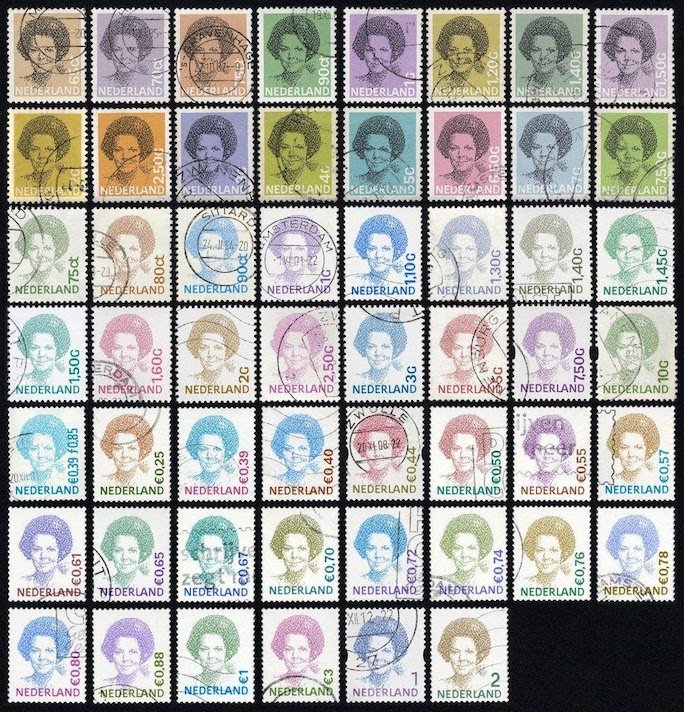PART 3: The History of Digital Art for Crypto Explorers
80s–90s: DIGITAL ART
Harold Cohen, Andy Warhol and other Representative Artists
During the 1980s digital technologies were no longer associated mostly with engineers – they became part of everyday life. Computers started to spread outside of scientific laboratories and they became employed both for business and personal use. While not a comprehensive list of artists, this post highlights some the main artists who brought significant contributions during the 80s and 90s.
HAROLD COHEN
Harold Cohen (1928-2016) was a British-born artist, renowned for having created AARON, a complex computer software program to generate art autonomously. Cohen’s work combined artificial intelligence with art. His major contributions in the field of digital art led his work to be displayed in many museums exhibitions, such as the Tate Gallery in London. Besides his interest in new technologies, Cohen was also a painter.
HAROLD COHEN, ATHLETE SERIES, 1986, SOURCE: MEDIUM, NYTIMES [1]
HAROLD COHEN, “LW3”, 1987, HAND-COLORED COMPUTER-GENERATED DRAWING. SOURCE: NYTIMES [2]
ANDY WARHOL
Andy Warhol (1928-1987) created a series of digital works on a personal computer, the Amiga 1000 model, in the middle of the 1980s. These works were made by the pop artist as part of a collaborative project with Commodore Amiga and had been left on Amiga floppy disks for nearly 20 years before they got found and recovered by the Andy Warhol Museum. The digital images included doodles and revisitations of Warhol’s existing artworks, such as the acclaimed Campbell’s soup can, and Botticelli’s The Birth of Venus.
If I had a good computer I could catch up with my thoughts over the weekend if I ever got behind myself. A computer would be a very qualified boss.
ANDY WARHOL, THE PHILOSOPHY OF ANDY WARHOL, 1975
ANDY WARHOL, ANDY2, 1985, SOURCE: DESIGNBOOM, © THE ANDY WARHOL FOUNDATION FOR THE VISUALS ARTS, INC. / COURTESY OF THE ANDY WARHOL MUSEUM [3]
ANDY WARHOL, VENUS, 1985, SOURCE: DESIGNBOOM, © THE ANDY WARHOL FOUNDATION FOR THE VISUALS ARTS, INC. / COURTESY OF THE ANDY WARHOL MUSEUM [4]
KENNETH SNELSON
Kenneth Snelson (1927-2016) was an American sculptor and photographer, who also gave contributions to the development of digital art. He is renowned as the Father of Tensegrity, described by the artist as “solid elements set in space and supporting each other through tension”.
His famous image “Forest Devils’ MoonNight” was created with a 3D computer animation program and was part of the artist’ exploration into computer imagery.
KENNETH SNELSON, FOREST DEVILS’ MOON NIGHT, 1991, C-TYPE PRINT, GIVEN BY THE AMERICAN FRIENDS OF THE V&A THROUGH THE GENEROSITY OF PATRIC PRINCE, COPYRIGHT © VICTORIA AND ALBERT MUSEUM, LONDON [5]
PETER STRUYCKEN
Peter Struycken (b.1939) is a versatile artist from the Netherlands, regarded as one of the pioneers in the field of digital art in his country. He is mostly renowned for having created the digital portrait of Queen Beatrix used for Dutch postage stamps. The image was made of digital-shifted dots, evoking a sort of “digital pointillism”.
PETER STRUYCKEN AND GERARD UNGER, THE BEATRIX STAMP SERIES, 1981–2010, SOURCE: FLICKR, © FLORIAN HARDWIG [6]
JAMES FAURE WALKER
James Faure Walker (b. 1949) is a British artist whose repertoire encompasses oil painting, watercolour and digital art. Since the end of the 1980s, he has been incorporating computer generated images into his painting, blending the diverse features of the digital and the physical paint to the extent that it’s often hard to discern which one is which.
JAMES FAURE WALKER, DROP, 1993, COMPOSITE INKJET PRINT, SOURCE: JAMESFAUREWALKER.COM, © JAMES FAURE WALKER [7]
*This article is for non-profit educational purposes. We do not represent or work with any of the featured artists. The copyright of all images belong to their authors. We aim to contribute to the research in the field of digital art and hope our readers will find this article beneficial to their learning.







